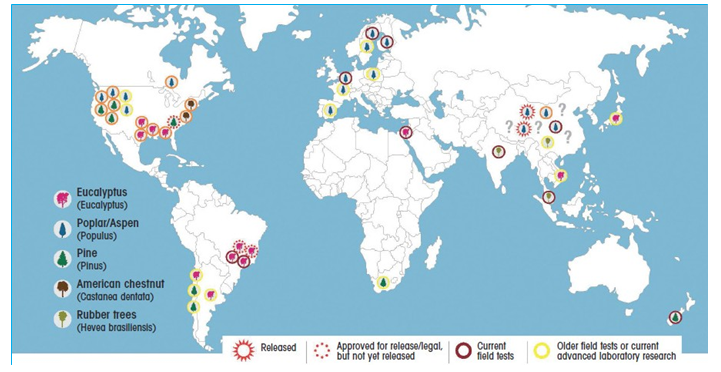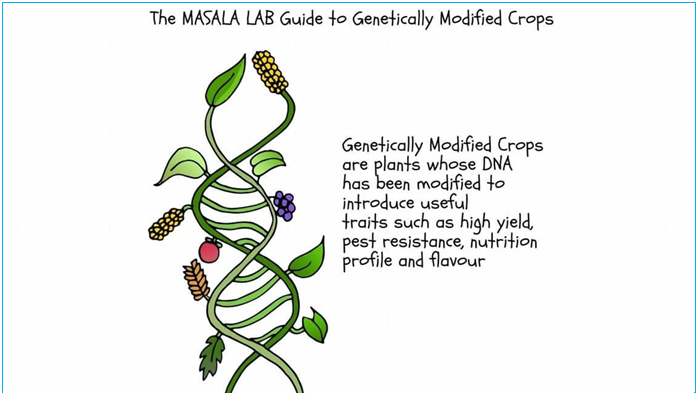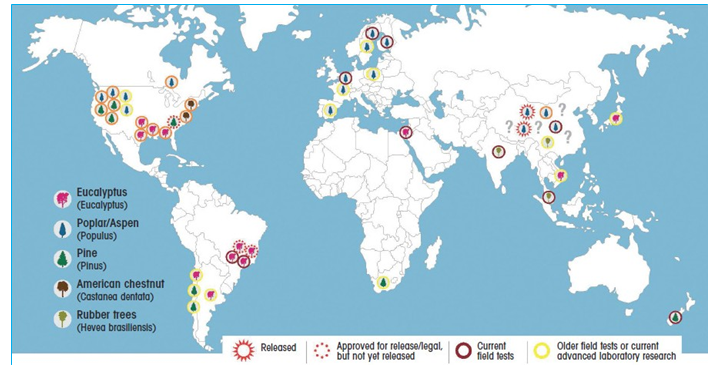Down To Earth(January16-31 2023)
Joshimath Crisis Warnings
- Joshimath town of Uttarakhand which is located in the slopes of Himalayas is facing a crisis due to land subsidence. This has put focus on the areas facing similar threats in the Himalayan region.
- Reasons aiding to land subsidence
- Natural Reasons:
- Himalayas are young mountain ranges, with unstable slopes built on moraine and are prone to landslides and erosion.
- This region is in a highly seismic zone and is earthquake-prone.
- Added factor of climate change, which is bringing more volatility because of unseasonal and extreme rain events.
- Anthropogenic reasons:
- Unplanned urbanization and irresponsible tourism activities.
- Eg: Uttarakhand had a road network of 8,000 km in 2000. Today, the network has increased to 40,000 km. For every km of road built, 20- 60,000 cubic meters of debris are produced. This means about 2 million cubic meters of construction waste have been dumped on the hill slopes in the state since 2000.
- Tunnel construction for the Tapovan-Vishnugad hydro power project of the National Thermal Power Corporation (NTPC).
- Building the Helang bypass just outside Joshimath for the Char Dham national highway project.
- Unplanned urbanization and irresponsible tourism activities.
Warnings before the crisis
- In 1976, M C Mishra committee recommended that all construction should be prohibited in the region. The report's findings were never implemented.
- In 2006, after new cracks emerged Uttarakhand Disaster Mitigation and Management Centre carried out a survey and found underground seepages, erosion and several types of anthropogenic activities have made the region to slide down, with a reported rate of more than 1 cm/year. The reason cited was the decrease in forest areas, coupled with the construction of “too many roads” has disturbed the natural slopes.
- More recently, in November 2021, residents of Joshimath had requested the administration to resettle the population whose houses were developing deep cracks due to the sinking of land.
Other areas with similar problems:
- Several other Uttarakhand towns and villages that are either already suffering from subsidence or are at high risk from it.
- Chamoli's Karnaprayag town shows cracks in several houses in the region. In 2021, the hills near Karnaprayag were cut unscientifically for the Char Dham project. This caused deep cracks, forcing residents to abandon their homes.
- Even Nainital is headed for a Joshimath-like situation since The carrying capacity of the town has not been estimated after 1867.

Way Forward:
- The first step should be the formation of a committee of independent experts to assess the damage and develop a strategy.
- We have little information on the characteristics of the cracks, their dimensions and the nature of their movement. This needs to be documented as a priority in order to understand the problem.
- Paradigm shift in the way development projects are commissioned. Government should not plan and execute projects in isolation but should give way for civil society in decision making process.
Women in STEMM (Science, Technology, Engineering, Mathematics and Medicine)
- The Indian Science Congress Association (ISCA), under the Department of Science & Technology organized the 108th edition of Indian Science Congress at Rashtrasant Tukdoji Maharaj Nagpur University in Maharashtra. The theme for this year’s meet was titled as “Science and Technology in Sustainable Development with Women Empowerment ''.
- Highlights of the meet:
- It included discussions and presentations of research connecting women empowerment with tribal development, digitisation, sustainable development and nation-building.
- It failed to bring up questions on unequal division of labor, social policies affecting women’s work and institutional protocols enabling women scientists etc.
- Indian Science Congress was relatively silent on the factors that impact women in STEMM not just in the country but worldwide.
Condition of women in STEMM:
- According to the UN, less than 30 percent of researchers globally are women.
- 61 out of 959 recipients of the Nobel prize are women.
- In India only 18.7 percent of the country’s researchers are women, according to data compiled by the Centre’s Department of Science Technology.
- Currently, there are no women directors at any of the 23 Indian Institutes of Technology and seven Indian Institutes of Science Education and Research.
- The National Institutes of Technology and autonomous institutions under the Centre’s Department of Biotechnology and dst have less than 10 women leaders each.
Need for Women in STEMM:
- Increasing the gender parity will create 230 million new jobs. This could lead to an increase in GDP by US $14 trillion in 2030.
- Improving gender diversity in professional fields, including STEMM, is tied to economic development.
- In India, the gender budget was first introduced in 2005-2006 in order to keep an account of resource allocation in a way that would help in the achievement of gender mainstreaming and to ensure that the benefits of development reach women as much as men.
- Union Finance Minister in her Budget Speech 2022-23 said, “Nari Shakti is the harbinger of India's bright future.”
Hurdles for Women in STEM:
- Systemic biases act as deterrents. eg: women risk facing penalties after a break in their careers.
- Decision making committees are gender biased issues and are less likely to promote women researchers.
- Societal systems and asymmetry, family upbringing have cultivated a mindset in children, especially among girls who feel that they are not ready to face STEMM.
Governmental efforts & initiatives:
- Measures include fellowships worth Rs. 25,000-55,000 to support higher education among women returning to science after a break, under programmes like the Knowledge Involvement in Research Advancement through Nurturing (kiran) Scheme.
- The Science and Engineering Research Board (SERB), a Statutory body of the Department of Science and Technology (DST), Government of India has launched a Scheme titled “SERB-POWER (Promoting Opportunities for Women in Exploratory Research)”.
- Women Entrepreneur’s Quest (WEQ) Programme was initiated by DST in partnership with Anita Borg Institute, USA for scouting and supporting Women Entrepreneurs in Technology.
- The Board of Control for Cricket in India (BCCI) announced that women cricketers will be paid the same match fee as their male counterparts.
Drought’s Domino Effect
- The number of drought-affected districts in India has seen a consistent rise in the past half a century. Drought hit areas have a multifaceted impact on society and especially women. Eg: Hardship to fetch water from faraway areas, combined with backbreaking work in farms, is scaring Marathwada women away from getting married to men living in water-scarce areas.
- The average number of drought-affected districts every year increased by 13 times between 2005 and 2019.
- Drinking water availability in taps still eludes urban and rural India. Only six states have 100 per cent tap water coverage, as per the Union Ministry of Jal Shakti.
Impacts of water shortage on women:
- Crop loss and fall in farm income. Thus causing long-term impacts, such as malnutrition, mass migration and changes in social behavior.
- The declining returns on agriculture has meant that women frequently work as wage laborers. Along with their other duties, this puts an inordinate amount of pressure on the health of rural women, who rarely find the time to recover from illness or childbirth.
- Fetching water takes time and causes physical strain. This leads to reduced time for farm activities, which in turn adversely impacts agricultural output.
- Large regions of the nation and states like Maharashtra are rain-fed and also grow capital-intensive cash crops, whose success depends on monsoons. The failure of these crops is a major factor for rural distress. Over 1,800 farmer suicides have taken place in 2022 in Maharashtra, as per the State Relief and Rehabilitation Department.
- Another key impact of the growing scarcity has been on changing marital practices in the region. National Family Health Survey (NFHS-5) for 2019-20 shows that in Beed district, nearly half the local women (43.7 percent) were married before turning 18 years, nearly double the national average; and 15.2 percent of girls in the 15-19 age group were mothers or pregnant at the time of the survey.
Genetically Engineered Trees in the Wild
- The US is thinking of allowing a genetically engineered (GE) version of the American chestnut tree to spread in the wild. The country has already developed and field tested the GE version, known as Darling 58 for this purpose.
- The decision was debated at 15th Conference of the Parties (cop15) to the UN Convention on Biological Diversity (cbd) in Montreal, Canada despite the fact that the US is not a part of cbd, which has 196 member-states.

Global Scenario:

- While China has allowed commercial plantations of genetically modified trees so far, many other countries, including India, are experimenting with different tree varieties.
- In 2002, China allowed the commercial plantations of two varieties of GE insect-resistant poplar trees.
- Malaysia has planted about 1.4 million GE poplar trees on 300-500 hectares.
- In June 2021, Rubber Board got the nod from the Assam government to carry out the field trials for GE Rubber.
Pros and Cons of GE Trees:
| Pros | Cons |
|
|
GM in India:
- The Genetic Engineering Appraisal Committee (GEAC) which functions in the Ministry of Environment, Forest and Climate Change (MoEF&CC) as a statutory body is responsible for appraisal of proposals relating to release of genetically engineered (GE) organisms and products into the environment including experimental field trials.
- Till now cotton is the only GM crop allowed for cultivation in India.
National Food Security Act, 2013 - Exclusion Error
- Although NFSA, 2013 provides legal right for food to poor households, there have been numerous exclusion errors. This has led to families facing hunger along with systemic apathy.
Anecdotes:
|
About NFSA:
- The National Food Security Act, 2013 was notified in 2013 with the objective to provide for food and nutritional security.
- The Act provides for coverage of upto 75% of the rural population and upto 50% of the urban population for receiving subsidized foodgrains under Targeted Public Distribution System (TPDS), thus covering about two-thirds of the population.
- All Antyodaya Anna Yojana (AAY) or the poorest of the poor group will receive 7 kg of subsidized food grains per person per month, general households at least 3 kg/person/month.
- Pregnant women and lactating mothers will be entitled to meals and maternity benefits of not less than Rs 6000. It is however restricted to two children only.
- The eldest women of the household of age 18 years or above will be the head of the household for the purpose of issuing ration cards.
- Recently the government decided to merge PM Garib Kalyan Anna Yojana with NFSA and the food available under NFSA is now free of cost to beneficiaries.
Extent of exclusion of beneficiaries:
- Calculations suggest that more than 150 million people are currently excluded from pds.
- 7.4 million people in the state are still unable to access ration due to the ceiling imposed by the central government” - as pointed out by Chief Minister, Rajasthan, in a letter to Prime Minister.
|
State |
Total population as per census 2011 (in million) |
Population to be covered under NFSA (in million) |
Population covered under NFSA (in millions) |
Number of ration cards canceled in 2013-21 |
|
Uttar Pradesh |
199.58 |
152.02 |
149.07 |
17,351,380 |
|
Rajasthan |
68.62 |
44.66 |
44 |
2,266,485 |
|
West Bengal |
91.34 |
60.18 |
60.18 |
6,862,37 |
|
Maharashtra |
112.37 |
70.01 |
70.01 |
4,266,095 |
|
Andhra Pradesh |
49.37 |
26.82 |
26.82 |
1,221,283 |
|
Tamil Nadu |
72.13 |
36.47 |
36.46 |
428,096 |
Reasons for Exclusion from the list:
- Political pressure and interference in updating the list of beneficiaries for vote bank politics.
- Since states are responsible for identification of beneficiaries, ground level government officials often miss the needy households while updating lists due to poor quality surveys.
- There is migration from rural areas in search of jobs, livelihood, marriage etc which leads to errors in counting in households and thus exclusion error.
- NFSA fixes the quota of beneficiaries based on the 2011 census, while the population has increased since. There is a data crunch since the next census has been postponed.
- Another reason for deletion of ration cards is per capita income has increased since 2013 and lesser people will need
- subsidized ration as per govt data and other is part of the process of weeding out ineligible, duplicate, fake or ghost beneficiaries.
Solutions for the “Deletion” problem:
- Government must expedite the survey work and should bring out correct data in the public domain for better policy planning and budgetary allocation. Eg: census data is required to revise the limit set for NFSA coverage.
- The government’s own data from the e-shram registration portal can be used for ration distribution. Though it does not cover the ration card but it does cover two important data points i.e Aadhar and income category.
- The One Nation One Ration Card scheme could help beneficiaries covered under NFSA access their entitlements from anywhere in the country.
QUICK LINKS